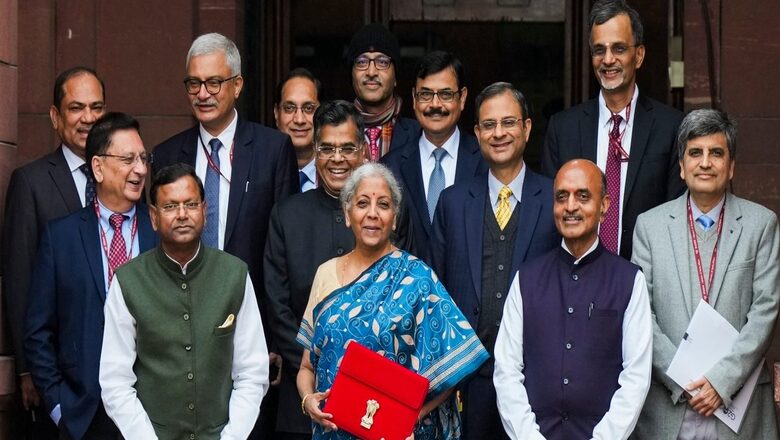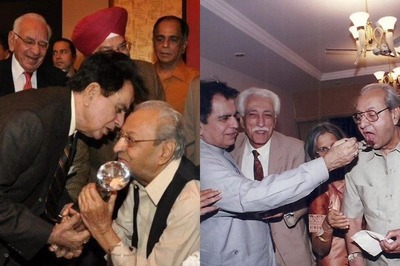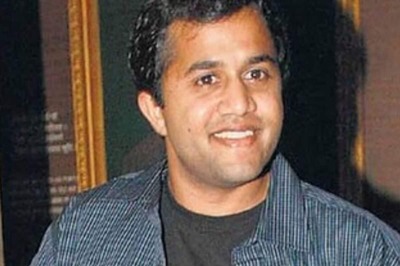
views
Political stability is often a precursor to economic stability. Scholars like Robert Higgs have argued that political stability reduces uncertainty, which in turn encourages investment and economic growth. When the political environment is stable, businesses and individuals are more likely to make long-term investments, leading to economic growth and stability.
In the context of interim budgets, they are often seen as a tool for political parties to woo voters with promises of economic benefits, leading to a surge in populist measures and freebies. However, this has not been the case with the current government in India. The interim budget presented by Finance Minister Nirmala Sitharaman demonstrates the incumbent government’s confidence about its electoral outcomes in upcoming general elections. One might argue that this is the rationale behind the government’s reluctance to indulge in giveaways, but the present administration prioritises fiscal responsibility and long-term economic growth through reforms. The focus of the government in the last decade has been on an inclusive welfare model and economic reforms. This is precisely why the Indian economy has witnessed profound positive transformation, with the fruits of development reaching the people at scale.
The government’s development philosophy covers all elements of inclusivity, including social inclusivity through coverage of all strata of society, and geographical inclusivity through the development of all regions of the country. According to empirical evidence based on the National Family Health Survey, there’s no evidence of the government playing favourites with any particular religious group or discriminating against any minority groups. There’s also no bias in providing bare necessities.
The idea is to target each and every household and individual, through initiatives such as ‘housing for all’, ‘har ghar jal’, electricity for all, cooking gas for all, bank accounts and financial services for all, in record time. The ‘Direct Benefit Transfer’ of Rs 34 lakh crore from the government using PM-Jan Dhan accounts has led to savings of Rs 2.7 lakh crore for the government, realised through the avoidance of leakages prevalent earlier.
The government’s efforts have resulted in a significant reduction in multidimensional poverty. With the pursuit of ‘Sabka ka Saath’ in these ten years, the government has assisted 25 crore people to get freedom from multi-dimensional poverty. At the same time, the government is also working towards minimising both inclusion and exclusion errors in the welfare schemes.
On the macroeconomic front, from 2014 to 2024, India witnessed a significant economic transformation, moving from the 10th to the 5th largest economy globally, underpinned by robust policy reforms and strategic investments. The approach to 2014 was marked by challenges, including high fiscal deficits, inflation, and stagnating growth, necessitating a shift towards more sustainable and inclusive economic strategies.
Upon assuming power in 2014, the Modi government initiated a series of structural reforms aimed at revitalising the Indian economy. These reforms focused on macroeconomic stability, enhancing the ease of doing business, and significant investments in infrastructure and digitalisation, contributing to India’s rapid growth and resilience against global economic uncertainties. The financial sector saw comprehensive reforms, including the Insolvency and Bankruptcy Code and the recapitalization of public sector banks, aimed at restoring financial health and boosting investor confidence. Simultaneously, regulatory simplifications like the implementation of GST and corporate tax cuts played a pivotal role in improving the business landscape and encouraging private sector engagement.
Post-Covid, the government is still following the fiscal consolidation path. The interim budget gave a clear message to investors and credit rating agencies about India’s commitment to reducing its debt. The plan is to decrease the fiscal deficit to 5.1 per cent of the GDP for the fiscal year 2025, down from 5.9 per cent in the fiscal year 2024. Furthermore, the minister revised the fiscal deficit forecast for the fiscal year 2024 to 5.8 per cent of the GDP, slightly lower than the initial estimate of 5.9 per cent.
Some might think that the incumbent government’s confidence about their fate in the next general elections reeks of arrogance. But if one tries to do an honest assessment of the efforts of the Union government on both macroeconomic and welfare fronts, they will find that this confidence is based on the GoI’s track record of governance, development, and performance. The government has provided transparent, accountable, people-centric and prompt trust-based administration with a ‘citizen-first’ and ‘minimum government, maximum governance’ approach. The impact of all-round development is discernible in all sectors, with people living better and earning better, with even greater aspirations for the future.
The Union government isn’t merely resting on its achievements from the past decade. There’s no room for complacency in recounting past victories when it comes to nation-building. Just as it’s unwise for a country to dwell on its historical glories or fixate solely on immediate growth, it’s equally crucial to set sights on the horizon. This is the driving force behind the Prime Minister’s passionate pursuit of the ‘Viksit Bharat Agenda’, a clarion call for sustainable economic progress.
The dream of transforming India into a developed nation by 2047 is ambitious, yet it’s the act of daring to dream and then steadfastly chasing that dream that paves the way for achievement. The Finance Minister has assured that a comprehensive roadmap for the ‘Viksit Bharat Agenda’ will be unveiled with the full budget in July, but even the interim budget has teased us with a glimpse into this grand vision, laying down the initial strokes of what promises to be a transformative blueprint for India’s future.
Similarly, a significant focus is placed on promoting green energy to meet the commitment for ‘net zero’ by 2070. Initiatives include viability gap funding for harnessing offshore wind energy, coal gasification and liquefaction, mandatory blending of compressed biogas (CBG) in CNG and PNG, and financial assistance for biomass aggregation machinery. These measures aim to reduce imports, promote the use of clean energy, and create entrepreneurship and employment opportunities.
The trajectory of future economic growth is increasingly being steered by the winds of innovation, a principle strongly advocated by economists like Philippe Aghion. Aghion’s work emphasises the pivotal role of innovation in driving economic expansion, productivity, and competitiveness on a global scale. This philosophy underpins the belief that fostering an environment conducive to innovation is essential for sustainable development and prosperity.
In line with this vision, the interim budget takes a significant step towards nurturing innovation within the nation. It proposes the creation of a substantial fund, a corpus of one lakh crore rupees, dedicated to empowering innovation. This fund is designed to offer a robust financial foundation for cutting-edge research and development, particularly in emerging sectors. By providing long-term financing or refinancing options characterised by extended durations and minimal to zero interest rates, the initiative aims to stimulate the private sector’s involvement in scaling up research and innovation efforts.
Moreover, the FM also announced the launch of a new scheme specifically targeted at bolstering deep-tech technologies for defence purposes, thereby accelerating the nation’s journey towards self-reliance (‘aatmanirbharta’). This initiative underscores the government’s commitment to not only advancing technological prowess in civilian domains but also ensuring that innovation plays a crucial role in enhancing national security and defence capabilities.
On the whole, the Interim Budget 2024-25 is like a well-baked cake, layered with the sweet promise of continuity, the rich cream of vision, and the cherry of robust long-term growth on top. It’s a budget that doesn’t just walk the talk, it sprints, leaps, and pole vaults towards the idea of a Viksit Bharat.
Aditya Sinha is OSD, Research, Economic Advisory Council to the Prime Minister. Views expressed in the above piece are personal and solely that of the author. They do not necessarily reflect News18’s views.
















Comments
0 comment